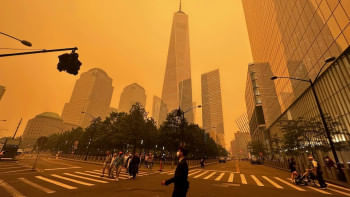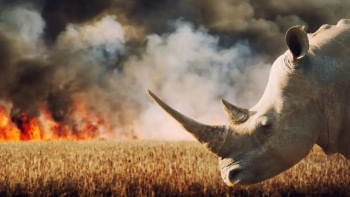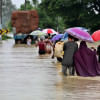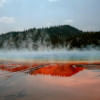How hot is too hot for the human body?

In the months of April through July this year, skyrocketing temperatures have already broken records in many parts of the world. Thus, when the summer of 2023 ends, it will perhaps be the hottest in recorded human history, but it may also turn out to be the coolest we will ever enjoy again. That is because in the years ahead, a warming planet will make this summer feel comparatively cool and pleasant.
Unprecedented temperatures are being recorded at Death Valley in California, where the mercury in July has already reached 53 degrees Celsius. The valley holds the world record for the hottest air temperature – 56.7 degrees Celsius on July 10, 1913 at Furnace Creek, headquarters of the Death Valley National Park.
Braving the sweltering heat, tourists are nevertheless flocking to Death Valley in droves to experience extreme weather for themselves. And yet, there has been only one death in the park: a 71-year-old man collapsed and died on July 18 as temperatures reached 49.4 degrees.
On the other side of the globe, close to 100 people are reported to have died over a period of several days in June from heat-related illness due to a searing heatwave that swept across two of India's most populous states: Uttar Pradesh and Bihar. The deaths happened when temperatures soared to 45 degrees Celsius.
Despite only one death at Death Valley, why did so many people die in India where the temperature was eight degrees less than that in the valley? This raises the question: how hot is too hot for the human body? What determines how much of the punishing heat our body can take and still survive?

The answer lies in the wet-bulb temperature (WBT), which is not the same as the ambient air temperature. Measured by a thermometer wrapped in a water-soaked cloth, WBT takes into account both heat and humidity. It is the lowest temperature to which an object can cool down when moisture evaporates from it. For humans, WBT is 35 degrees Celsius, according to a study published in the journal Science Advances in 2020.
Like most warm-blooded mammals, we cool ourselves by converting sweat into water vapour around a constant body temperature of 37 degrees. This temperature maintains a constant balance between heat loss and heat gain.
As global temperatures rise, air will become warmer, and hence will be able to hold more moisture. That, in turn, will increase humidity and cause wet-bulb temperature (WBT) to go up. They will be very high, last for weeks and months, as we are witnessing now, and blanket large areas. Consequently, heat-related deaths will rise, even in moderate summer temperatures.
The WBT will be high if there is more moisture in the air. A high WBT will hamper our body's ability to sweat and cool itself down to maintain its core temperature. As a consequence, the body will overheat, forcing blood to rush to our skin to try to release heat, thereby causing damage to the internal organs. Moreover, the body will become hypothermic (different from hypothermia, which happens when our body's temperature drops to dangerously low levels), leading to symptoms such as nausea, weakness, dizziness and dehydration, a rapid pulse, a change in mental state, fainting, coma and eventually death.
If the humidity is low but the temperature is high, or vice versa, WBT probably will not be near our body's tipping point. For example, if the temperature is 40 degrees and humidity is 20 percent, WBT is only 32 degrees, whereas when both the humidity and the temperature are very high, WBT can go up towards dangerous levels. Once WBT exceeds 35 degrees, it will be difficult to survive for an extended period of time. This is especially true for people who work outside, and those with underlying health issues.
Although survival becomes difficult at high WBT, lower temperatures can also be deadly. Studies show that the lower limit of our body's temperature is 28 degrees Celsius. Below that, the body expends more energy to maintain its core temperature. One of the ways it does this is by shivering, when our muscles involuntarily contract to produce heat. While the lower range has been established, the upper limit is still uncertain.
Now, back to fatalities at Death Valley and India. During heatwaves that engulfed Uttar Pradesh and Bihar in June, humidity was 53 percent, resulting in a WBT of 36 degrees Celsius, which is higher than the upper limit of human adaptability to heat and humidity. On the other hand, average humidity at Death Valley is around 15 percent. Therefore, when the ambient temperature is 53 degrees, WBT is a tolerable 29 degrees. Hence, the big difference in the number of deaths.
As for Dhaka, with an average July temperature of 33 degrees Celsius and 75 percent humidity, WBT is 29.2 degrees. Because WBT is low enough for the people to sweat profusely, there are seldom any heat-related deaths in Dhaka. However, that does not necessarily mean that life will be comfortable during heatwaves.
Humans are amazingly adaptable creatures, but there are limits to their adaptability. We can save ourselves from ferocious cyclones by moving to designated shelters. We can build elevated homes – machas – in areas inundated by devastating floods or by rising sea levels. But a blazing heatwave is a different beast. Unlike the rich who can keep themselves cool in the comfort of their air-conditioned homes and offices, or go on a long holiday to cooler haunts, adapting to sizzling temperatures for the homeless and poor folks, particularly those who have to work outside for a living and do not have the luxury of air conditioners or even fans in their hovels, is different than adapting to cyclones and floods.
As global temperatures rise, air will become warmer, and hence will be able to hold more moisture. That, in turn, will increase humidity and cause WBT to go up. They will be very high, last for weeks and months, as we are witnessing now, and blanket large areas. Consequently, heat-related deaths will rise, even in moderate summer temperatures.
According to Nasa, WBT in many regions, including South and Southeast Asia, the Persian Gulf and the Red Sea, Eastern China and Brazil, are likely to exceed the optimum value of 35 degrees Celsius by 2050. So, if we really want to save ourselves from being roasted by oppressive heatwaves, the simplest and sanest way is to force our government to stop burning fossil fuels without further delay.
Dr Quamrul Haider is a professor of physics at Fordham University in New York, US.

 For all latest news, follow The Daily Star's Google News channel.
For all latest news, follow The Daily Star's Google News channel. 











Comments